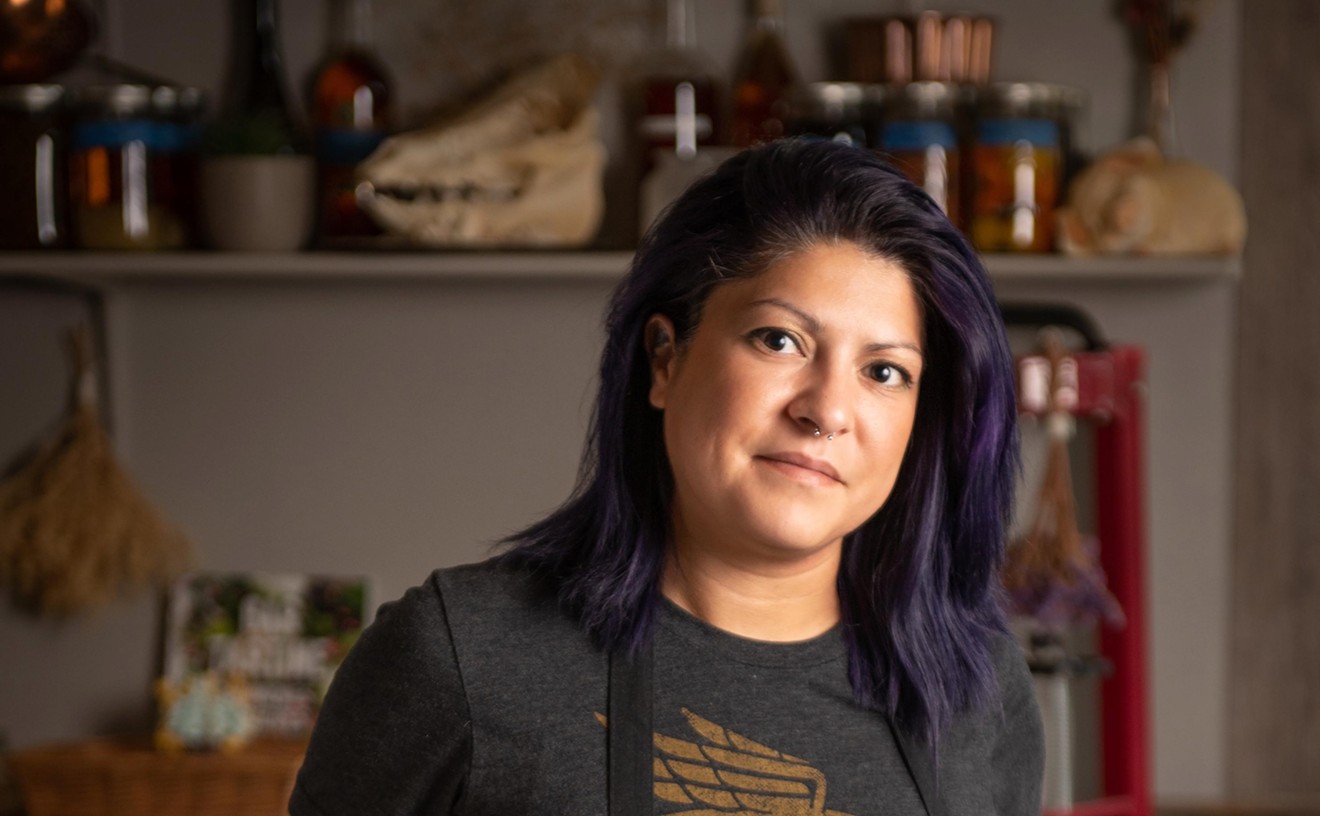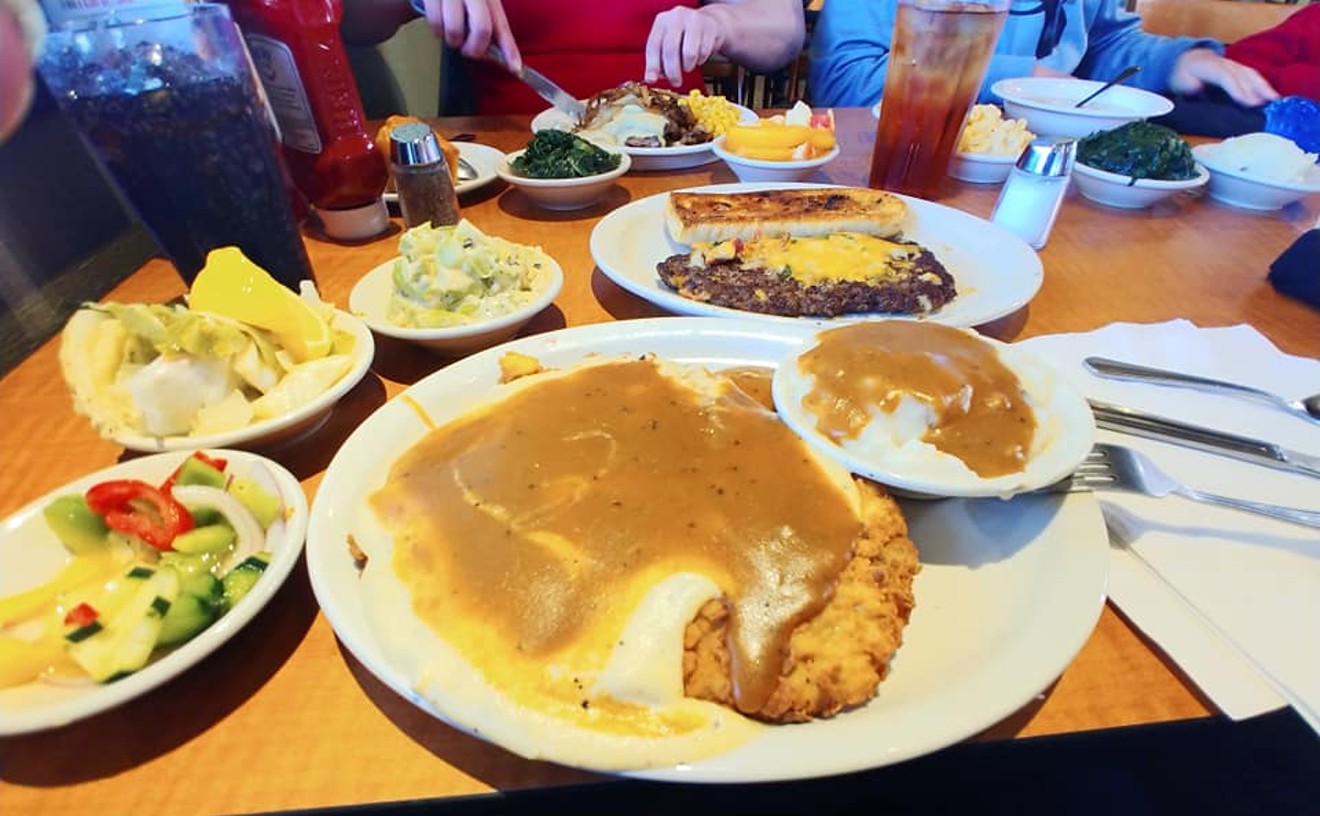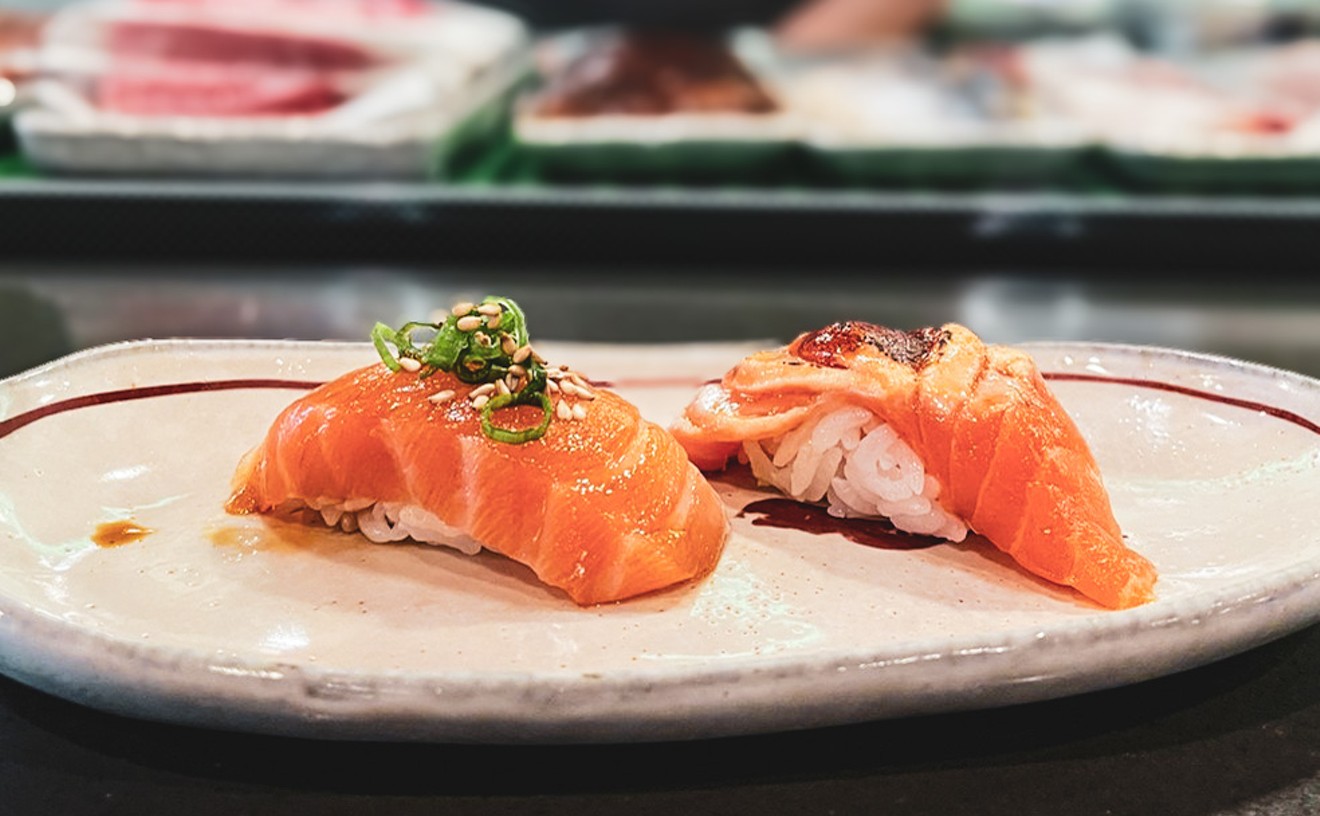I pointed out last week how, when I called for a Bombay martini, a waiter at Sevy's asked "regular Bombay or Sapphire."
Since Sapphire hit the market in 1988 and began the upscale gin revolution, The Original Bombay (that's what it now says on the label) faded into near obscurity--at least in the minds of bartenders. The Sevy's guy may be the first service industry professional in Dallas since the mid-90s to utter the words "regular Bombay."
But what's the difference? Both brands share the same vapor infusion process and same base of ingredients--juniper (of course), iris root, licorice, lemon peel, almonds, angelica root, coriander seeds and cassia bark, in unknown (they won't tell) quantities. Sapphire merely adds two more...and a blue tinged bottle.
"There's often a lot of image and cachet attached" to Sapphire, admits Merlin Griffiths, the brand's global ambassador. "But people have also moved away from the bitter palate."
Indeed, regular Bombay hits you with a medicinal bitterness before you even take that first sip. Oh, there's sweet grass, aspic and lemon zest on the nose, as well--but the overarching sensation is a stinging one. This carries through in tasting, as a bitter, alcoholic flavor wraps around a rather complex array of juniper, coriander, rind and wet hay, with a long citrus finish.
For Sapphire, Griffiths explains, the old recipe was rebalanced. The distillery also added cabeb berries and grains of paradise to the mix, running the alcohol content up to 47 percent at the same time (compared to Bombay's 43 percent).
The result is a spirit that is softer and more inviting and singularly lacking in alcoholic intensity. Instead, there's pine, pepper and citrus on the nose and a spicy burst across the palate. The juniper wilts, allowing coriander and a malty taste forward. Biting residue from lemon peel and licorice are content to complement the peppery notes.
It's a sophisticated gin. But that odd malt/pepper/fermenting grass flavor, presumably from grains of paradise, also makes it more of a cocktail than a sipping gin.
"Sapphire is a mixing profile," Griffiths confirms. "A Sapphire martini after work with a hot shave--try it. It makes you feel like a king."
Maybe. But a regular Bombay martini--at work--with a dry shave makes you feel like...like...I have no idea. Bloody and unemployed?
Bombay is a more robust, straightforward, almost brutal gin. It lends itself to ice, tonic or a dry martini. Sapphire, on the other hand, is made for the new wave of gin-based cocktails. In martini form, it is more forgiving than older spirits--able to absorb too much vermouth and live with too little, either way.
What they really share in common is a name and core flavors of coriander and angelika. Personally, I'm a regular Bombay drinker. But Sapphire is a more intricate beast.










